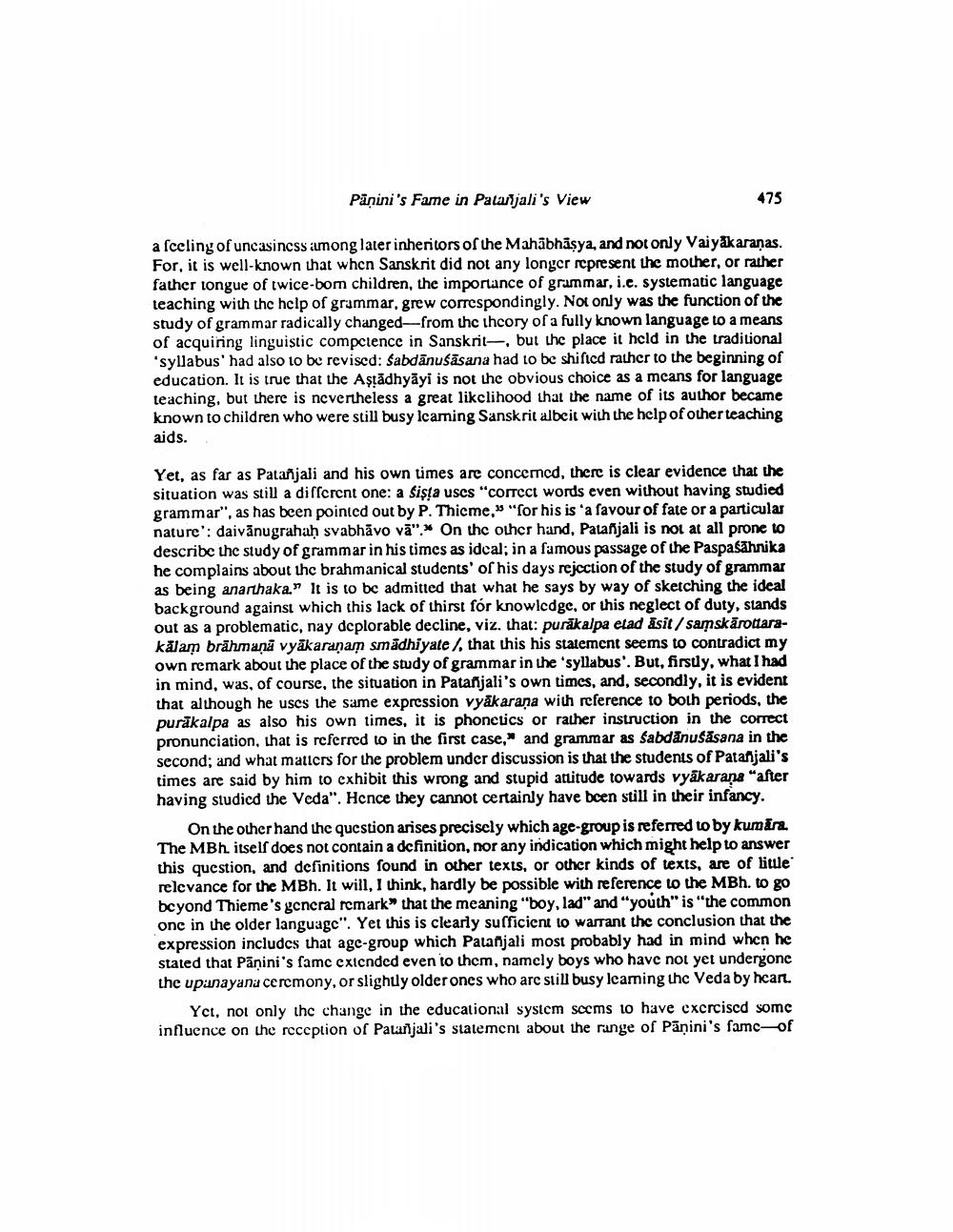Book Title: How Far Did Paninis Fame Really Extend In Patanjalis View Author(s): A Wezler Publisher: A Wezler View full book textPage 8
________________ Panini's Fame in Patanjali's View 475 a sceling of uncasiness among later inheritors of the Mahābhāsya, and not only Vaiyak aranas. For, it is well-known that when Sanskrit did not any longer represent the mother, or rather father tongue of twice-bom children, the importance of grammar, i.e. systematic language teaching with the help of grammar, grew correspondingly. Not only was the function of the study of grammar radically changed from thc thcory of a fully known language to a means of acquiring linguistic competence in Sanskrit, but the place it held in the traditional syllabus' had also to be revised: $abdānusasana had to be shiftcd rather to the beginning of education. It is true that the Aştādhyāyi is not the obvious choice as a means for language teaching, but there is nevertheless a great likclihood that the name of its author became known to children who were still busy lcaming Sanskrit albeit with the help of other teaching aids. Yet, as far as Patanjali and his own times are conccmcd, there is clear evidence that the situation was still a different one: a Sista uses "correct words even without having studied grammar", as has been pointed out by P. Thicme," "for his is a favour of fate or a particular nature': daivānugrahaḥ svabhāvo vā". On the other hand, Patanjali is not at all prone to describe the study of grammar in his times as idcal; in a famous passage of the Paspasāhnika he complains about the brahmanical students' or his days rejcction of the study of grammar as being anarthaka." It is to be admitted that what he says by way of sketching the ideal background against which this lack of thirst for knowledge, or this neglect of duty, stands out as a problematic, nay deplorable decline, viz. that: purakalpa elad asit / saskārotarakālam brāhmană vyākaranam smadhiyate that this his statement seems to contradict my own remark about the place of the study of grammar in the 'syllabus'. But, firsty, what I had in mind, was, of course, the situation in Patanjali's own times, and, secondly, it is evident that although he uses the same expression vyāk arana with reference to both periods, the purākalpa as also his own times, it is phonetics or rather instruction in the correct pronunciation, that is referred to in the first case," and grammar as Sabdānusasana in the second; and what matters for the problem under discussion is that the students of Patanjali's times are said by him to exhibit this wrong and stupid attitude towards vyákarana "after having studied the Veda". Hence they cannot certainly have been still in their infancy. On the other hand the question arises precisely which age group is referred to by kumara The MBh itself does not contain a definition, nor any indication which might help to answer this question, and definitions found in other texts, or other kinds of texts, are of litle relevance for the MBh. It will, I think, hardly be possible with reference to the MBh. to go beyond Thieme's gcncral remark that the meaning "boy, lad" and "youth" is "the common one in the older language". Yet this is clearly sufficient to warrant the conclusion that the expression includes that age-group which Patanjali most probably had in mind when he stated that Pānini's famc extended even to them, namely boys who have not yet undergone the upunayana ceremony, or slightly older ones who are still busy leaming the Veda by hcar. Yet, not only the change in the educational system secms to have excrcised some influence on the reception of Palanjali's statement about the range of Panini's famc-ofPage Navigation
1 ... 6 7 8 9 10 11
